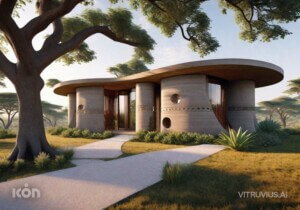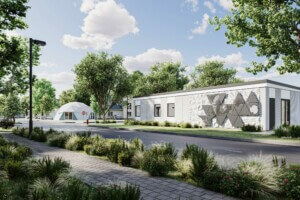Print your next house in 30 separate snap tight pieces
While events like Maker Faire have done a lot to increase the visibility of 3D printing, the London-based generative and 3D design group Softkill has spoken openly about how they still think “3D printing is a specialized, one-off luxury, rich man’s thing.” But they went on to say that “there really is an interesting future for architecture and 3D printing because you have great cost savings and material efficiency, which architects are really interested in. That’s where 3D printing is really pushing the discipline.” Softkill recently tested the limits of the latest in Selective Laser Sintering technology with Protohouse, a ⅓ scale house completely fabricated by a 3D printer.
Laser sintering is a process in which a laser sweeps across a pan of powdered nylon (or other material), fusing, or sintering, on contact. The process repeats as the product is built layer by layer from the bottom up. Laser sintering also has the unique ability to create a larger structure from many smaller interlocking pieces, lending it a flexibility not typically seen in most 3D printed objects. For Protohouse, which was on exhibit at the London 3D Printshow held last month, Softkill designed computer algorithms that test the boundaries of large scale 3D printing by micro-organizing the printed material itself.
“Matter is redistributed along principal lines of stress while structural agency is embedded through a procedural based logic of connections. What emerges is a thick layer of a porous, fibrous construct. Dissolving geometry through an abstract material articulation, resulting in a non-geometrical structure that is materially efficient, with a high degree of transparency and stiffness, while being extremely articulated, tactile, and ornate…Particles in a volume are redistributed (either added or removed) through calculating spring force on particles. Subsequently a non-mathematical method is used to trace directionality and structural flow through the structure. Agents are launched in a tension and compression vector field and seek their path between the origins of the applied forces, displaying direction in the structure, forming lines of stress.”










